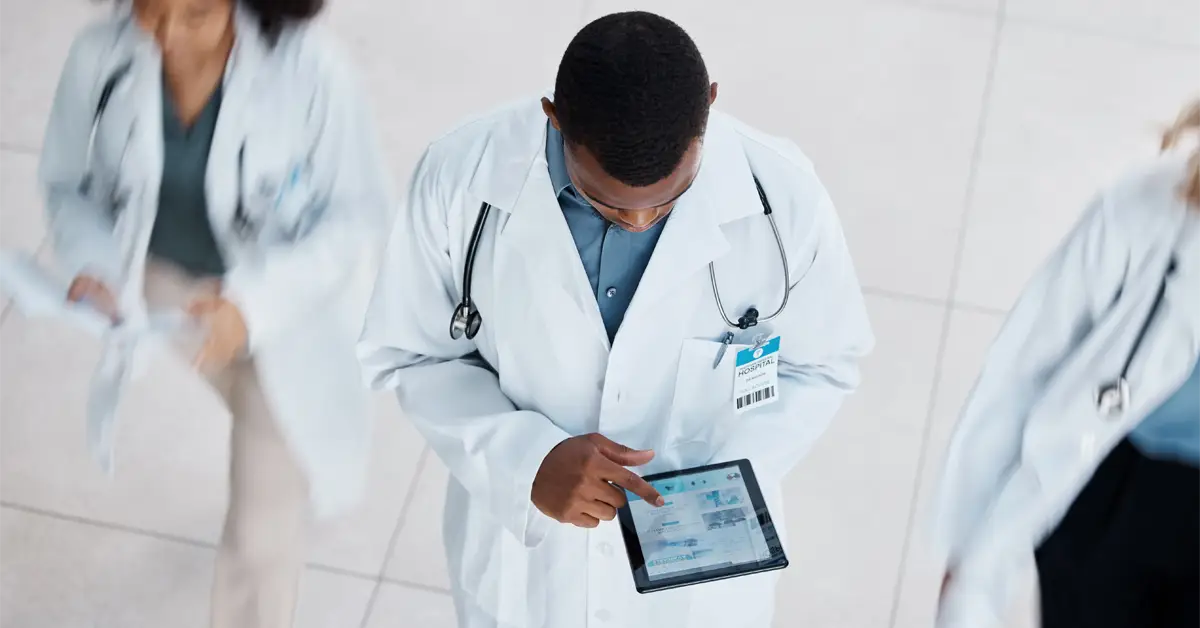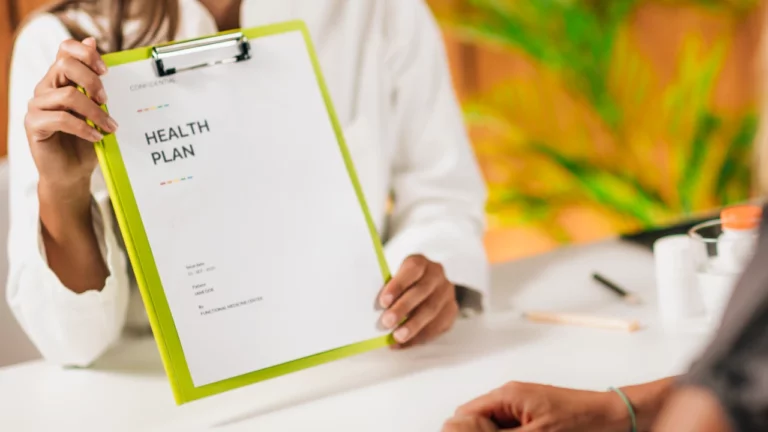Healthcare providers, are you having trouble with patients not attending their scheduled tests and checkups? The continuous rise in healthcare costs and inconvenient hospital trips might be some of the main reasons. Consequently, for patients, not having regular checkups can lead to a number of problems, including: health deterioration, readmissions, and delayed medical interventions. For healthcare providers, on the other hand, the impact can be increased workload and lower patient satisfaction.
Thankfully, the use of a Remote Patient Monitoring program is becoming an increasingly popular practice that is helping to solve these persistent challenges for both patients and healthcare providers.
Before we discuss the best RPM practices to keep your patients safe and healthy, we will first briefly address the overview and importance of remote patient monitoring.
What is Remote Patient Monitoring?
Remote patient monitoring (RPM) is a program that utilizes monitoring devices to collect and securely transmit real-time health data from patients to healthcare providers. RPM can be used for a range of chronic patient conditions, including monitoring blood pressure and glucose levels.
Through the use of telehealth services, RPM allows for ongoing virtual monitoring of patient health. It has proven to be especially useful during a public health emergency, such as the COVID-19 pandemic. Benefits of RPM include improved patient outcomes, increased efficiency in healthcare delivery, and the ability to track patient progress and avoid hospital visits. Medicare covers certain RPM services and devices, and there are specific codes for billing for RPM-related services.
To set up a successful RPM program, it is important to establish a clear and effective health communication system between patients and physicians, ensures patient data security and provides the necessary training for the effective use of monitoring devices. Read on to learn more about the benefits of RPM and how it can be leveraged to improve patient care and overall health and wellness
Benefits of Remote Patient Monitoring System
Remote patient monitoring (RPM) is important because it can improve access to care, increase efficiency, enhance patient engagement, improve health outcomes, and reduce healthcare costs. RPM allows patients who live in rural areas or otherwise have difficulty accessing healthcare to receive the care they need. It also enables healthcare providers to monitor their patients more closely and provide timely intervention when needed, which leads to improved overall efficiency and productivity.
RPM promotes better communication and collaboration between patients and healthcare providers, and can help patients to be more proactively involved in their own healthcare. By providing patients with the ability to monitor their own health and receive timely care when needed, RPM can help to improve overall health outcomes and reduce the need for more expensive interventions later. Additionally, RPM can help to reduce the need for in-person visits to healthcare providers, lowering healthcare costs.
For example, remote blood pressure monitoring can be beneficial for patients with chronic congestive heart failure by helping to prevent rapid health deterioration. By using remote blood pressure monitoring, patients with congestive heart failure (CHF) can monitor their blood pressure levels and automatically alert their healthcare providers if they experience a sudden increase in blood pressure. This type of automatic alert can help to prevent a worsening of the patient’s condition, and potentially prevent hospitalization.
Emergency health conditions like described above can be prevented by constantly monitoring a patient’s vitals. RPM becomes very useful when a medical emergency occurs because it immediately notifies the patient’s provider and directs the patient to the appropriate type of urgent medical assistance. RPM also allows healthcare professionals to keep track of a patient’s condition without having to be there physically, and thereby saving time, money, and ultimately–lives.
Best Practices for Remote Patient Monitoring to Keep Patients Safe and Healthy
Now that you know what a remote patient monitoring system is and how it is used, it’s important for healthcare providers to learn the best practices of RPM. The following five RPM best practices will allow this revolutionary technological solution to be employed to its full potential and ensure that patients obtain the best security and healthcare they deserve.
1) Creating a Strong Connection with Patients
Developing a strong connection between the patient and provider encourages collaboration and allows for extra insight into a patient’s individual health requirements. Comprehensive insight into a patient’s health allows providers to better link patients to treatments and resources that promote patient safety and overall health.
As a provider, your role in this process is essential for the success of remote monitoring programs because patients need someone, they can trust with their health data. Patients need an opportunity to feel comfortable enough with their providers that they want to share their personal health information with them. The more open communication between both parties, the more effective the remote patient monitoring system will be.
2) Consider Security and Compliance when Selecting an RPM Provider
Healthcare confidentiality and security breaches are a serious problem in the United States. According to a report by the Department of Health and Human Services, there were over 500,000 reported cases of healthcare confidentiality and security breaches in the United States in 2019 alone.
These security breaches can have serious consequences for patients, including identity theft, financial loss, and degredation to the quality of their medical care. Furthermore, for healthcare organizations, confidentiality and security breaches can lead to financial penalties and damage to their reputation.
To ensure true patient safety, working with someone with experience in this arena is very important. When choosing a remote patient monitoring provider, consider the following:
- Consider whether they comply with HIPAA requirements and have URAC full accreditation.
- Ask how they monitor data sharing across multiple platforms
- Understand what measures the provider follows to protect against cybersecurity breaches or cyber threats from hackers
3) Keep an Eye on Important Signs and Symptoms
Monitoring patients continuously and in real-time is important because it helps ensure they get the care they need, especially those with chronic conditions. A provider can prevent hospitalizations, readmissions, medical errors, and patient harm by monitoring patients regularly using RPM.
There are several things a provider can do to keep an eye on their patients remotely, including:
- Set up the patient with the necessary RPM device and ensure that it is properly connected to the app.
- Establish a communication plan with the patient and their care team to ensure that all changes in vital signs or symptoms can be quickly reported.
- Monitor the patient’s data regularly and look for any changes from baseline readings.
- Keep track of the patient’s symptoms, including any new ones that may appear over time.
- Identify any red flags in the data that indicate a need for intervention, such as a sudden change in vital signs or an increase in symptoms over time.
- Communicate any changes or concerns with the patient’s care team and take appropriate action when needed.
4) Encourage Patient Adherence
According to research by the Agency for Healthcare Research and Quality (AHRQ), non-adherence to medical treatment is a major problem in the United States. It is estimated that between 25 and 50 percent of patients do not adhere to their prescribed medical treatment. This non-adherence can lead to several negative outcomes.
One way that remote monitoring can help improve adherence is by providing data on how well patients are doing with their treatment. When a patient isn’t taking their medications as prescribed, it will show up in their provider’s dashboard, and trends will become evident. The provider and their patient can then discuss why they’re not adhering to the treatment plan, and develop strategies together to help them improve.
Remote monitoring is not a panacea for improving adherence, but it does provide more data about patients that can help providers make better decisions. If any patient is not adhering to their treatment plan, it’s important to figure out why and remove any barriers preventing them from doing so.
The importance of communication with patients, especially those with chronic conditions, cannot be overstated. It’s essential to ensure that each patient receives the care they need to achieve an improved quality of care.
5) Choose a Solution that is Easy to Learn and Use
Some elderly patients may have a hard time operating a medical device and RPM mobile app, which could have negative consequences for their overall patient safety and health outcomes. Many medical devices and RPM mobile apps are designed for use by technologically savvy individuals, and may sometimes be more difficult for elderly patients to use if they have less experience with digital interfaces or have poor eyesight.
The result will likely be that some elderly patients will not be using the devices or apps as intended, which can compromise their safety and health. For example, if an elderly patient is unable to properly operate their in-home blood pressure monitor, they may not be able to accurately track their blood pressure levels, which can taint proper analysis and diagnosis, and lead to a worsening of their condition.
Additionally, if elderly patients are unable to properly use an RPM mobile app, they may not receive timely care when it is critically needed, which can also lead to a worsening of their health. Overall, it is important to ensure that medical devices and RPM mobile apps are user-friendly and accessible to all patients, including the elderly and those with disabilities, to ensure optimal patient safety and health outcomes.
Examples of Remote Patient Monitoring Devices
Mobile medical devices and wearable technology are increasingly being used for RPM. These devices can include those for monitoring blood pressure, blood glucose levels, and other important health indicators. In addition, there are a variety of consumer health and wellness wearables available that can be used to track a variety of health metrics. By leveraging these devices, healthcare providers can improve patient outcomes and promote better health.
Overall, the use of mobile medical devices and wearable technology can be a powerful and cost-effective tool for enhancing patient care and improving patient outcomes. By establishing a strong relationship with patients and leveraging these technologies, healthcare providers can provide the highest quality care possible.
DrKumo’s Remote Patient Monitoring Technology Solution
DrKumo, the multi-awarded winning leader of connected health technology, offers the highest level of remote patient monitoring due to its easy-to-use medical devices and user interface, advanced cybersecurity features, and their ability to provide real-time updates for continuous monitoring.
DrKumo’s secure cloud technology has been designed to provide intelligent insights based on information gathered by the physiologic health sensors. With the data collected, doctors can make well-informed medical decisions based on a large number of accurate vital physiologic analyses.
DrKumo’s approach takes into account that patients need to be able to use the system with minimal training, so the software interface is very user-friendly. The interface is intuitive and simple, which means that after a quick training, users can easily navigate through the interface.
Additionally, DrKumo makes that every data transmission or communication is protected via a cyber-secure cloud-based system — and every conversation is HIPAA compliant, so the data is protected from any breaches in confidentiality. All of these security measures make for increased patient satisfaction and a tangible return on investment.
Takeaways
Remote patient monitoring is revolutionizing healthcare. RPM can help healthcare providers monitor their patients more closely and provide timely intervention when needed, which improves overall efficiency and productivity.
This revolution in healthcare results in better communication and collaboration between patients and healthcare providers, and can help patients to be more involved in their own healthcare. Additionally, RPM can help to prevent the worsening of health conditions and reduce the need for more expensive interventions down the road.
As long as healthcare practitioners follow best practices when implementing RPM technology solutions, there should be no reason why this telehealth modality will not become more commonplace in everyday practice.
Are you a healthcare provider or a network of providers looking for ways to keep your patients safe and healthy through remote patient monitoring? Contact DrKumo now!








